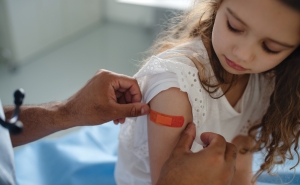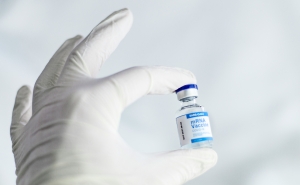Data collected in 23 countries in last two weeks of January reveal overall drop in COVID-19 vaccine acceptance, with increased acceptance in nine countries
The percentage of people globally who say they will get a COVID-19 vaccine has fallen in recent weeks, even as tens of millions of doses have been administered around the world, new survey data suggest.
The Johns Hopkins Center for Communication Programs, along with MIT, Facebook, and WHO, have been overseeing a global COVID behavior survey since July 2020 from nearly 1.7 million participants across 67 countries. The most recent data, drawn from more than 86,000 participants in 23 countries including the U.S., were collected in the two weeks ending February 1. The Center for Communication Programs is based at the Johns Hopkins Bloomberg School of Public Health.
After a slight increase to 66 percent of people saying they would get a COVID-19 vaccine at the beginning of January 2021, the average acceptance level across the 23 countries in this analysis fell to 63 percent. This overall decline comes amidst increased focus and media discussion on the rollout and access to COVID-19 vaccines. Broken down by country, the latest survey found that, in the final two weeks of January, vaccine acceptance declined in seven countries, remained similar in another seven, and rose in nine more.
Since March 2020, when WHO declared COVID-19 a pandemic, more than 112 million cases have been recorded and nearly 2.5 million people have died from it, according to Johns Hopkins University. More than 500,000 people have died from COVID-19 in the United States, the largest number of deaths in any country.
“We had hoped we would find that acceptance of COVID vaccines was on the rise in more countries, since vaccination is a critical part of ending the pandemic,” says CCP’s executive director Susan Krenn. “This means we have more work to do in helping people understand why getting vaccinated is so crucial to helping them, their families, and their communities.”
A key point to communicate is that a large percentage of people in a community need to be vaccinated in order to reach herd immunity, the level at which the spread of SARS-CoV-2—the virus that causes COVID-19—becomes difficult. Herd immunity levels vary depending on the infectiousness of a disease. Dr. Anthony Fauci, director the National Institute of Allergy and Infectious Diseases, has estimated that 70 to 85 percent of Americans need to be vaccinated to reach herd immunity for COVID-19. That threshold is much higher than the percentage of people in many countries reporting that they would be willing to get a vaccine.
The surveys leveraged Facebook’s reach of more than two billion global users, an average of 112,000 of whom participated in surveys roughly every 14 to 17 days since July. The questions have been about COVID-19 prevention behaviors such as mask wearing and social distancing, vaccine acceptance and trusted COVID influencers. This work has informed both global and national COVID-19 policies, and in the coming month the survey will evolve to include more countries and richer data to better describe global efforts to address the pandemic.
Of five countries in the Americas, the latest data found, only the United States saw a decline in vaccine acceptance in late January (from 69 percent to 65 percent). The other four countries— Mexico, Argentina, Brazil, and Colombia—saw an increase of five percentage points in vaccine acceptance. Argentina saw much higher acceptance rates among certain demographics. For example, in the most recent survey, acceptance rates in Argentina are higher among older (+18 percent), college educated (+12 percent), urban residents (+20 percent), and men (+5 percent) than they were two weeks earlier.
The survey found that reported vaccine acceptance rates in European countries remained constant, with Italy and the United Kingdom well into the range of achieving herd immunity. Some countries (Italy, the UK, and Germany) have very low rates of reported non-acceptance (8 percent, 10 percent, and 13 percent, respectively). By contrast, respondents in Turkey and France are consistently among the lowest reported rates of vaccine acceptance within the 23 countries surveyed in this study: 24 percent and 56 percent, respectively.
After a recent dip, acceptance levels in Nigeria are beginning to rise. Gender differences there continue to exist among participants, but since the last data collection period women’s acceptance rates increased 4 percentage points from 51 percent to 55 percent.
Along with the new data on vaccine acceptance rates, CCP released another wave of data about other COVID-19 prevention behaviors for the last two weeks in January. From the first survey in July, reported handwashing in the United States is down in every group except rural residents. Over the same period, reported mask wearing and physical distancing are up in the U.S. And while a smaller percentage of Americans report they have trust in scientists, they are still the most trusted sources of COVID-19 information.
The data from this global survey of knowledge, attitudes, and practices around COVID-19 is continuously being collected, and results can be found on CCP’s KAP—knowledge, attitudes, and practices—COVID dashboard. The findings allow researchers, public health programmers and policymakers to compare changes in behaviors and attitudes over time and inform further research related to the development of prevention messages.
# # #
Media contacts:
Johns Hopkins Center for Communication Programs: Stephanie Desmon at sdesmon1@jhu.edu.
Johns Hopkins Bloomberg School of Public Health: Barbara Benham at bbenham1@jhu.edu.





